 [While preparing the recent posting of my 1971 New York Times“Manifesto for Photography Education,” I came across the text of my 2011 keynote address to the 43rd Annual Conference of the International Visual Literacy Association (IVLA), hosted by The Richard Stockton College of New Jersey and held at Seaview, in Galloway, New Jersey, delivered on October 1, 2011.
[While preparing the recent posting of my 1971 New York Times“Manifesto for Photography Education,” I came across the text of my 2011 keynote address to the 43rd Annual Conference of the International Visual Literacy Association (IVLA), hosted by The Richard Stockton College of New Jersey and held at Seaview, in Galloway, New Jersey, delivered on October 1, 2011.
Because it expands on and reconsiders that 1971 position paper, I thought it should appear here as a follow-up. It incorporates passages from the earlier text, but goes well beyond it, as you’ll see.
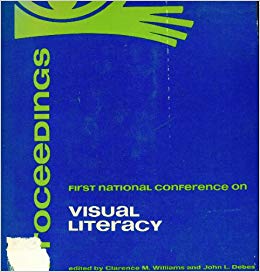 The term “visual literacy” entered the lexicon in 1969, when John Debes (pronounced debs) published his book with that title. Debes, coordinator of visual learning at Eastman Kodak in Rochester, NY, also co-founded the IVLA that same year (with Clarence Williams of the University of Rochester). So there’s a certain symmetry in my addressing that organization 40 years after broaching this subject in relation to photo education.
The term “visual literacy” entered the lexicon in 1969, when John Debes (pronounced debs) published his book with that title. Debes, coordinator of visual learning at Eastman Kodak in Rochester, NY, also co-founded the IVLA that same year (with Clarence Williams of the University of Rochester). So there’s a certain symmetry in my addressing that organization 40 years after broaching this subject in relation to photo education.
You’ll find Part 1 below. Click here for Part 2. — A.D.C.]
•
K-12 Photo Education and Visual Literacy: Some Backstory (1)
Before I launch into this presentation, let me thank Jung Lee and Frank Cerreto of the International Visual Literacy Association for inviting me to participate in this, my first IVLA conference, and Roberto Muffoletto of the VASA Project, a distance-learning initiative, for sponsoring this talk. Thanks also to my colleagues John Alley and Colleen Thornton, whose discussions with me about K-12 photo education in recent years have informed my thinking about this set of issues.
I should start by qualifying (or disqualifying) myself as a commentator on matters of visual literacy. As a critic and historian of photography, I’m not pedagogically involved in visual literacy per se, though I’d like to think that my work, involving as it does the close reading of photographs, impinges on that field. As a teacher, I’ve worked almost exclusively with post-secondary and adult-education students. As a lecturer, I’ve delivered conference talks to organizations of K-12 photo teachers in the U.S. and Canada. The well-received but quickly remaindered book I published in 1995, Looking at Photographs: Animals, a primer on reading photographs aimed at ages 8-12, is the closest I’ve come to a tutorial effort aimed at the K-12 constituency.
More recently, beginning in 2006 I became the publisher and editor of The New Eyes Project, a website devoted to K-12 photo education that I produce in collaboration with John Alley, who teaches photography at the high-school level in Richmond, VA, and is present at this conference. I publish and direct three other websites — Teaching Photography, for post-secondary photo educators; the Photography Criticism CyberArchive, a deep repository of writings by numerous authors; and my own blog, Photocritic International. These, along with New Eyes, constitute Photo Education Online, a consortium of web resources that may prove useful to you. (I should mention that Sprint Systems of Photography sponsors all four of these sites.) I have a handout here with brief descriptions of these and their URLs.
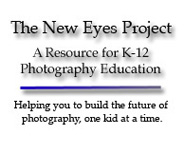 So I’m with you, so to speak, but not one of you — an empathetic, supportive outside observer, not a teacher of visual literacy in a school setting. However, I’ve concerned myself with photography education since beginning my work in the late 1960s. And I didn’t restrict that interest to college-level photo education, as you’ll see. Almost exactly 40 years ago, in fact, I published an essay titled “A Manifesto for Photography Education” in the October-November 1971 issue of a short-lived alternative periodical from Baltimore, Maryland, called The Paper.[1] A month later the New York Times reprinted this article, retitled “Along With the Three R’s — Photography?” by the Times headline writer.[2]
So I’m with you, so to speak, but not one of you — an empathetic, supportive outside observer, not a teacher of visual literacy in a school setting. However, I’ve concerned myself with photography education since beginning my work in the late 1960s. And I didn’t restrict that interest to college-level photo education, as you’ll see. Almost exactly 40 years ago, in fact, I published an essay titled “A Manifesto for Photography Education” in the October-November 1971 issue of a short-lived alternative periodical from Baltimore, Maryland, called The Paper.[1] A month later the New York Times reprinted this article, retitled “Along With the Three R’s — Photography?” by the Times headline writer.[2]
You’ll find this in my book Light Readings, and I have copies here as takeaways, for those of you who want them, but let me read a few paragraphs from it to you now, as it represents my first foray into commentary on what we call visual literacy.
•
“The illiterate of the future will be ignorant of the use of camera and pen alike.” That was Moholy-Nagy’s prophecy in 1932, and what is startling about it is not only its accuracy but our persistent unwillingness to take heed of its implications despite four more decades of accumulated evidence demonstrating inarguably that photography is the most profound and energizing innovation in communication since the printing press. …
It should be obvious, then, that in any consideration of methods for alleviating the widespread photographic illiteracy of our time we are dealing with a phenomenon vastly larger than the mere appearance of a new graphic medium with expressive/creative potential. Of course photography is an art form, and of course the teaching of it as such demands a radical re-evaluation of our established methods for teaching, instilling and nurturing creativity. But that reassessment has been long overdue in the arts anyway.
To suggest that this should be the main thrust of photography education in our time is as constricted an attitude as that which says photography’s real struggle within our culture should be toward its acceptance as an art form. …
 In light of the omnipresence of photographic imagery and the medium’s manifold offshoots in our culture today, the elitist parochialism of this concept is painfully obvious. Even if we exclude photography’s effects in other areas and concentrate solely on the communications media — film, TV, books, magazines, newspapers — we are forced to conclude that we, as a culture, are now receiving as much of our information from the photographic image as we are from the written word, which in turn means that roughly 50 per cent of our decisions (collective and individual) are in some way based on photography. To exclude from the concept of the photography community anyone who derives half his data input from the photograph is a bit ludicrous.
In light of the omnipresence of photographic imagery and the medium’s manifold offshoots in our culture today, the elitist parochialism of this concept is painfully obvious. Even if we exclude photography’s effects in other areas and concentrate solely on the communications media — film, TV, books, magazines, newspapers — we are forced to conclude that we, as a culture, are now receiving as much of our information from the photographic image as we are from the written word, which in turn means that roughly 50 per cent of our decisions (collective and individual) are in some way based on photography. To exclude from the concept of the photography community anyone who derives half his data input from the photograph is a bit ludicrous.
Let us, therefore, posit a new definition of the photography community; one more appropriate for our own time. Let us include in it — with no insistence on ranking those we include according to the esthetic quality of their work or their awareness of their involvement with the photographic image — anyone who makes, uses, edits, views, assesses, incorporates, studies, learns from or teaches with the photographic image in any of its forms on a regular basis. …
[W]e must take Moholy’s prophecy to heart in this new light and recognize how imperative it is that everyone in this larger photography community (and not just those who eventually decide to make photography their vocation or avocation) be educated in the functions of the photographic image. Such instruction is precisely as vital as is that in reading and writing; it should begin in childhood, and be an integral part of the school curriculum at all levels. . . .
What we need … is an educational approach to photography which does not relegate it to the tail end of Fine Arts departments, but which integrates it with virtually every discipline. … [W]e will begin to get [this] only when everyone concerned with photography education is willing to look beyond the limited purview of the craft/esthetics approach and begin to apply pressure throughout the entire educational system for an interdisciplinary approach to photography education …
The age of specialization may turn into a permanent cultural status quo, but that is scant excuse for continuing to teach photography as though it were entirely unrelated to the culture(s) in which it exists, nor for teaching other subjects as though they related to a non-photographic culture. We must face the fact that we are now — and will be for centuries at least, if we survive — living in a social system utterly dependent on the printed word and the photographic image.
The time for the change this recognition makes imperative is now. We are the “illiterates of the future” Moholy warned us about; and our children will be the illiterates of an even more hopeless future unless we transcend our current fantasies about photography education and align them at last with the higher realities of our time and place.
•
![]() So far as I could tell, this heartfelt polemic had no impact on the field, save for perhaps inspiring someone in the marketing division of Kodak to initiate a short-lived promo campaign they called “Photography: the Fourth R,” aimed mainly at selling cameras to kids — though it did result in Kodak’s donations of materials to some programs and the company’s production of some useful K-12 teaching materials. Nonetheless, I offer it to you today as not just a period piece but a premise for this talk, as evidence that you and I share some common ground. From that standpoint I want to pose some open questions.
So far as I could tell, this heartfelt polemic had no impact on the field, save for perhaps inspiring someone in the marketing division of Kodak to initiate a short-lived promo campaign they called “Photography: the Fourth R,” aimed mainly at selling cameras to kids — though it did result in Kodak’s donations of materials to some programs and the company’s production of some useful K-12 teaching materials. Nonetheless, I offer it to you today as not just a period piece but a premise for this talk, as evidence that you and I share some common ground. From that standpoint I want to pose some open questions.
As a critic I’ve always cast a broad net in determining those manifestations of photography to which I’ve turned my attention. The impetus for writing and publishing that 1971 manifesto came from my encounters with a number of people, most of them relatively young at that time, who were working in or had even initiated K-12 photo-education projects, usually alternative shoestring operations but a few of them embedded in public and private schools, occasionally funded by some official sponsor.
They were dotted all over North America: one in Baltimore, several in Rochester (the Visual Studies Workshop there served as a hotbed for such ventures), several in New York City, several more in Chicago, and others across the map, including Canada. Among those involved were Benedict J. Fernandez, Susan Rosenberg, Peter Hunt Thompson, Mary Daugherty, Nathan Lyons, and Alan Teller. To the best of my knowledge, those people, and quite a few others involved in parallel projects, remain alive and well and willing to talk about those scattered early experiments in teaching photography to the young.
So the first point I want to make today is that no one — and I mean no one — has asked them to do so. Talk, that is. In effect, these various programs, and others that came after, constitute a collective if uncoordinated experiment in the potentials of photography as a significant component of K-12 education. Some of the in-school programs, and many of the alternative-organization projects, targeted minority, inner-city, and at-risk youth, thus comprising one of the most direct efforts to reach those marginalized population sectors with visual education. Yet, surprisingly, outside of their immediate geographic area little attention has been paid to most of these projects.
And the K-12 photo-education movement as a whole — which is national, and, indeed, international in scope — remains unacknowledged as such. In fact, so far as I can tell no serious study has yet been undertaken of this far-flung grass-roots educational effort and its 40-year-plus trajectory. The history of this uncoordinated but important venture into the pedagogy of teaching photography (and, through that medium, instilling some aspects of visual literacy) thus remains unwritten.
•
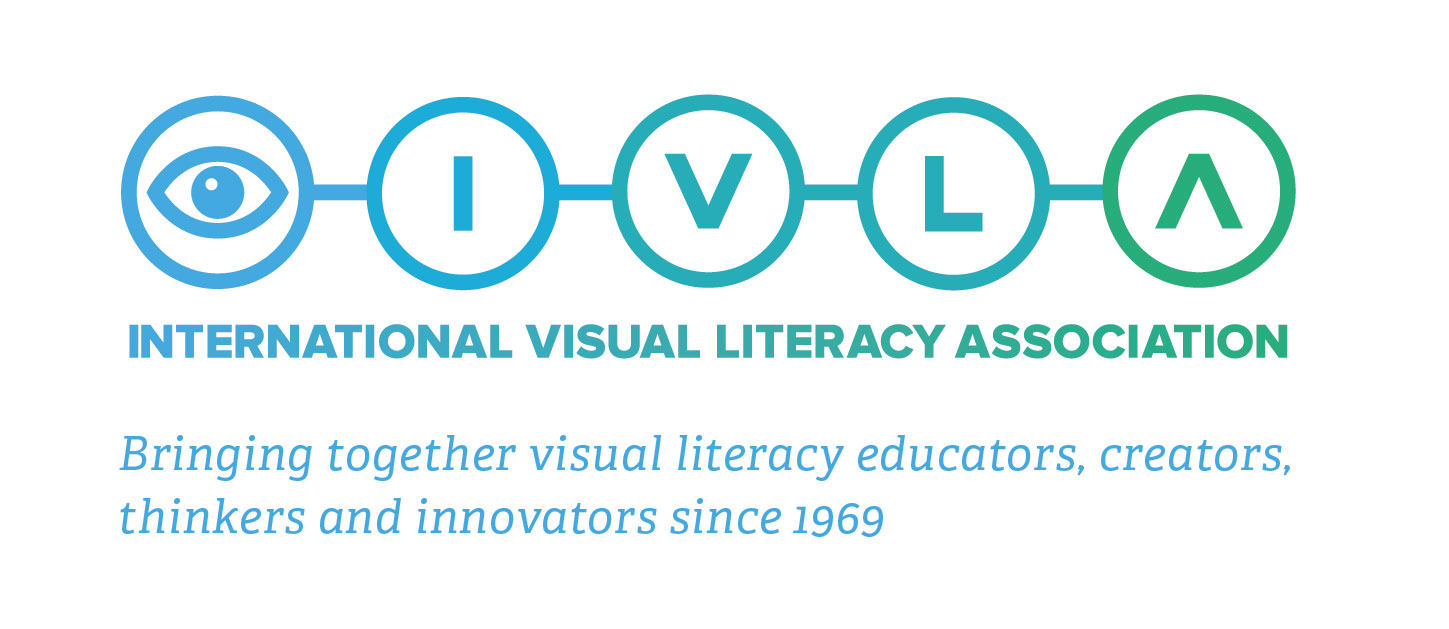 I’d like to know why. From my outsider’s perspective, the visual literacy movement has possibly missed an important boat by failing to recognize the relevance, significance, and longevity of the K-12 photo-education movement, and by not encouraging or even undertaking the creation of an annotated history thereof. As one consequence of this neglect, the present-day K-12 photo-education movement suffers from a dramatic ahistoricism. No current program of which I’m aware acknowledges its predecessors of the past four decades. Most claim not just innovative but pioneering status.
I’d like to know why. From my outsider’s perspective, the visual literacy movement has possibly missed an important boat by failing to recognize the relevance, significance, and longevity of the K-12 photo-education movement, and by not encouraging or even undertaking the creation of an annotated history thereof. As one consequence of this neglect, the present-day K-12 photo-education movement suffers from a dramatic ahistoricism. No current program of which I’m aware acknowledges its predecessors of the past four decades. Most claim not just innovative but pioneering status.
This got foregrounded for me when my colleague and collaborator John Alley participated in and reported to me on the 2007 “Visible Rights Conference” organized by the Department of African and African American Studies at Harvard University, a gathering that other obligations prevented me from attending. While the event included representatives of current programs with high profiles and substantial sponsorship — such as the Institute For Photographic Empowerment (IPE) project at the Annenberg School, Univ. of Southern California — none evidenced interest in claiming their lineage. (This conference followed an earlier one held in São Paulo, Brazil that same year.)
Indeed, according to John, they presented themselves as sui generis, apparently jockeying for position as the originators of the concept of K-12 photo education. (The IPE bills itself modestly as “the first such Institute of its kind in the world.”) Notable by their absence from this conference’s programming was any attention by the conferees to the projects that had broken ground for this discipline four decades previously, this lacuna made possible because — one assumes deliberately — none of the field’s founding fathers and mothers got invited to the event. They go unmentioned in the “Participatory Photography Toolkit for Practitioners and Educators” compiled post-conference by Gretchen Segars, whose bibliography includes nothing on any program prior to 1985. [Click here for a downloadable pdf file of this document.] …
•
Notes:
[1] Coleman, A. D. “A Manifesto for Photographic Education: The Illiterates of the Future.” The Paper (Baltimore) 2:33 (21 October–4 November 1971), p. 6. [“Photography in Baltimore” issue.]
[2] Coleman, A. D. “Along With the Three R’s — Photography?” New York Times Nov. 21, 1971, pp. D30, D32.
•
Special offer: If you want me to either continue pursuing a particular subject or give you a break and (for one post) write on a topic — my choice — other than the current main story, make a donation of $50 via the PayPal widget below, indicating your preference in a note accompanying your donation. I’ll credit you as that new post’s sponsor, and link to a website of your choosing.
 Include a note with your snail-mail address (or email it to me separately) and I’ll include three (3!) copies of The Silent Strength of Liu Xia, the catalog of the 2012-13 touring exhibition of photos by the dissident Chinese photographer, artist, and poet, who, after eight years of extralegal house arrest in Beijing, finally got released and expatriated to Germany in 2018. The only publication of her photographic work, it includes all 26 images in the exhibition, plus another 14 from the same series, along with essays by Guy Sorman, Andrew Nathan, and Cui Weiping, professor at the Beijing Film Academy. Keep one for yourself, share the others with friends.
Include a note with your snail-mail address (or email it to me separately) and I’ll include three (3!) copies of The Silent Strength of Liu Xia, the catalog of the 2012-13 touring exhibition of photos by the dissident Chinese photographer, artist, and poet, who, after eight years of extralegal house arrest in Beijing, finally got released and expatriated to Germany in 2018. The only publication of her photographic work, it includes all 26 images in the exhibition, plus another 14 from the same series, along with essays by Guy Sorman, Andrew Nathan, and Cui Weiping, professor at the Beijing Film Academy. Keep one for yourself, share the others with friends.


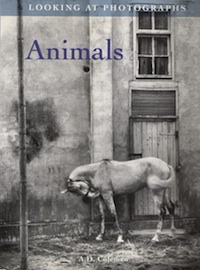
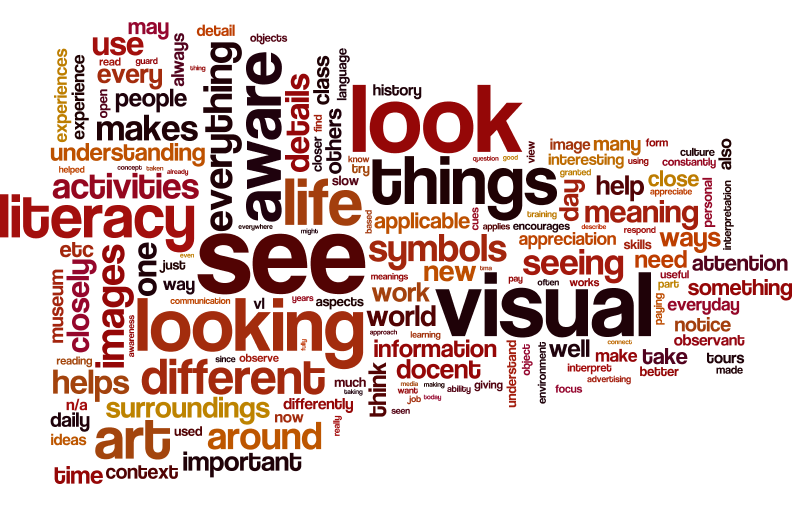
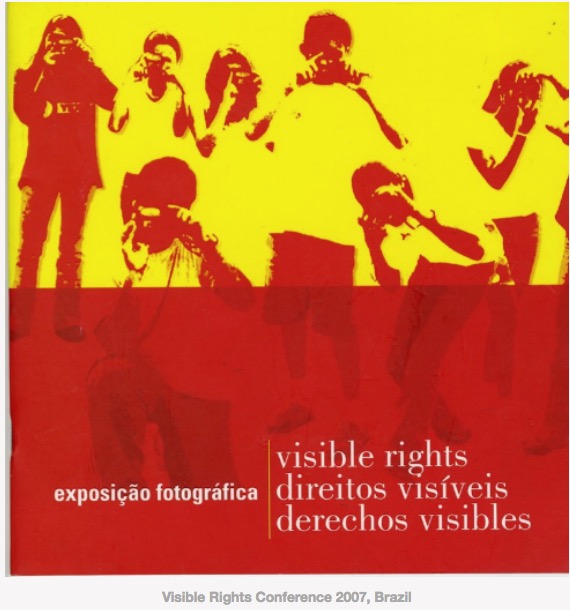




Leave a Comment